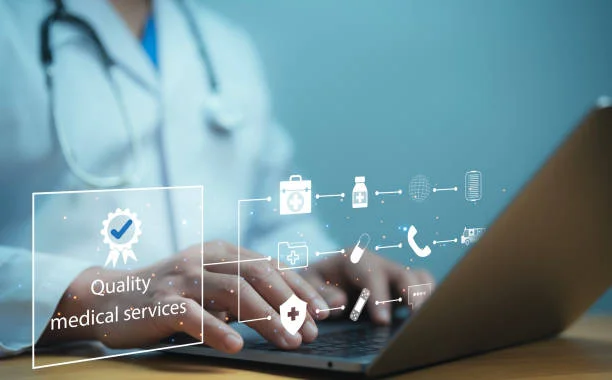Imagine sitting across from your medical software team over a cup of coffee. The word ‘compliance’ comes up, and everyone pauses of Multilingual Software Translation. You might picture forms and audits, but the lead developer adds, ‘It’s more than that; it’s about how our software talks to people.
At first, it seems a bit abstract. How could language impact compliance? Apart from legal obligation, compliance is about clarity, trust, and safety. That’s where medical software localization services play an imperative role. It is a way to make software safe, reliable, and trusted, no matter where it’s used.
Compliance Isn’t a One-Size -Fits-All
Each country has its own rules and regulations regarding medical compliance. For instance, in developed countries, not even a single drug is given without checking the prescription, whereas in developing countries, there is no such rule. Moreover, there is some medical software that is introduced in developing countries with a delay. Accurate translation of those software manuals is very important. Especially when devices run on regionally adapted software versions. Therefore, to use it for human health, understanding its user manual is important, which can be possible through translation services.
For healthcare compliance translations, translators need to have a thorough understanding of these rules. Even a single mistranslated word from clinical instructions or patient safety protocols can lead to serious misunderstandings, impact treatment outcomes, or cause legal issues.
By hiring the best translation service provider, you can make sure that each guideline, warning, and procedural instruction is translated to perfection. Professional translators would not only work on the language but also give considerable thought to the regulatory context and the cultural nuances of the country where the target audience is situated.
The Real Power Lies in Context
Imagine a diabetes app rolled out in Southeast Asia. The translation is technically correct, but the phrasing seems awkward to users. Alerts are ignored, instructions are misinterpreted, and patient engagement drops.
Localization goes beyond literal translation. It adapts software to local habits, symbols, and tone. Units of measurement, date formats, and notification wording all align with cultural expectations. A blood sugar alert in Japan might be more formal, while in Spain, a slightly warmer tone works better. When the software “speaks” the user’s language, mistakes drop, trust rises, and compliance happens naturally.
Connect the dots—discover related reads that add depth to this story.
Consistency Saves Lives
Here’s a common scenario: your global software team produces multiple documents, and suddenly “adverse event” becomes “negative reaction” in one report and “undesired effect” in another.
Professional multilingual translation services tackle this with translation memories, glossaries, and local reviews. Terms stay consistent across all languages. For example, “prescription refill” in an American EHR system remains identical in French, Mandarin, or Arabic interfaces. Consistency isn’t just clarity; it’s audit-ready compliance that regulators respect.
Early Localization: Avoiding Costly Mistakes
A common misstep is waiting until the software is built to translate it. This often leads to interface issues, misaligned notifications, and expensive redesigns.
Consider a patient feedback form. In France, certain checkboxes are mandatory by law, while in Malaysia, they are optional. If the form wasn’t localized early, your development team would need costly adjustments. Early localization allows the software to adapt seamlessly to multiple markets, avoiding rework and regulatory risk.
Translation as a Competitive Edge
Many companies see translation as a cost. But here’s the reality: non-compliance is far more expensive. Fines, recalls, and market restrictions can devastate a healthcare product.
In contrast, software that’s ready in multiple languages signals professionalism. Hospitals and clinics prefer tools that need minimal adaptation. Being “regulation-ready” builds trust, improves adoption, and gives your company a clear competitive edge. In healthcare, compliance is a market differentiator.
Keeping Up with Updates
Healthcare software evolves constantly. New features, security patches, and regulatory updates are released regularly. Missing one can introduce compliance gaps.
Continuous multilingual software translation services ensure that updates, no matter how minor, are adapted for every market. Alerts, interface changes, and new workflows are translated accurately, keeping the software reliable, safe, and compliant across regions.
Trust Through Language
Compliance is about trust at its foundation. Medical practitioners and their patients depend on software to assist them in making crucial decisions. Error rates are lowered, acceptance raised, and trust generated through culturally tailored, clear instructions.
To meet compliance and increase output, translation into various languages is not the only thing needed; it is also necessary to elevate user experience and establish credibility over time. The program that genuinely “talks” its user’s language will have loyalty, respect, and trust.
Conclusion
The takeaway is clear: multilingual software translation isn’t optional. It reduces risk, ensures compliance, and gives you an edge over competitors. The whole process starts from localization at the very beginning and finishes with continuous translation workflows passing through adherence to regulations, consistency in operations, and users’ confidence.
In the medical field, language precision is a necessity. Translation should be treated as a key strategy, one that ensures patient safety, empowers users, and prepares your software for global deployment. This is not just another language; it is safety, trust, and compliance wherever your product is.
Explore further—your next favorite read is just a click away at Buzz BLOG.

